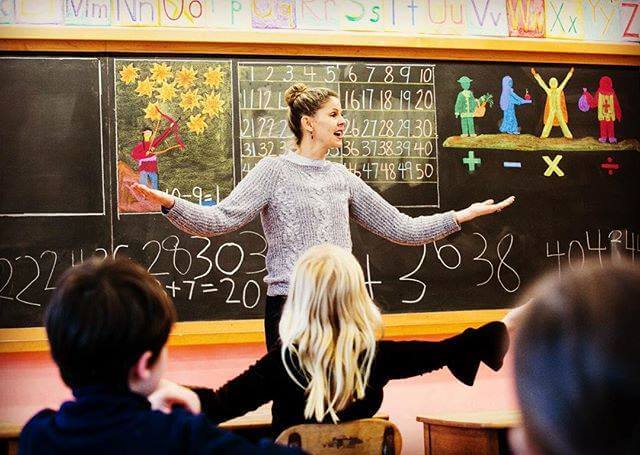Honoring Dr. King
To honor Dr. Martin Luther King, Jr. ‘s birth and his tremendous contributions to humanity, here are some resources to re-enliven our commitment to anti-racism and social justice as parents, teachers and community members.
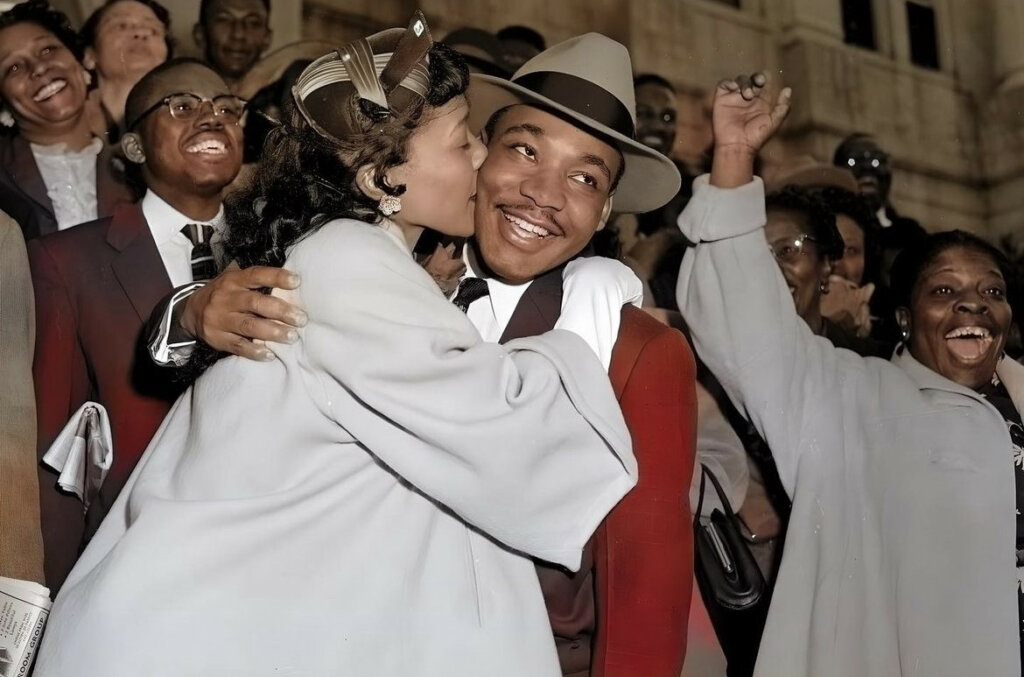
We encourage you to join us in observing Dr. King Day as more than a single day of remembrance, and to carry his principles with you throughout the year. Keeping Dr. King (who might still be alive today if his life hadn’t been taken so soon, when he was 39) a relevant figure and influence in our everyday lives, prevents him from fading into the black and white background of history with a single well-known speech.
Honoring Dr. King at BWS
One way we keep Dr. King’s legacy alive in our school community is with the BWS STAR Code. Unique to our school, the STAR Code was created based on Dr. King’s work by BWS teachers and students, you’ll find it prominently displayed throughout the school. The five points of the star reflect our shared values and guide our behavior and collaboration across the school, from the classroom to the Board room. Teachers and administrators practice these values with our students from Early Childhood through Eighth Grade. They use this visual reminder to work through social and behavioral challenges, or proactively, in social-emotional talking circles or schoolwide assemblies. We encourage parents and caregivers to post and use the same teaching tool at home.
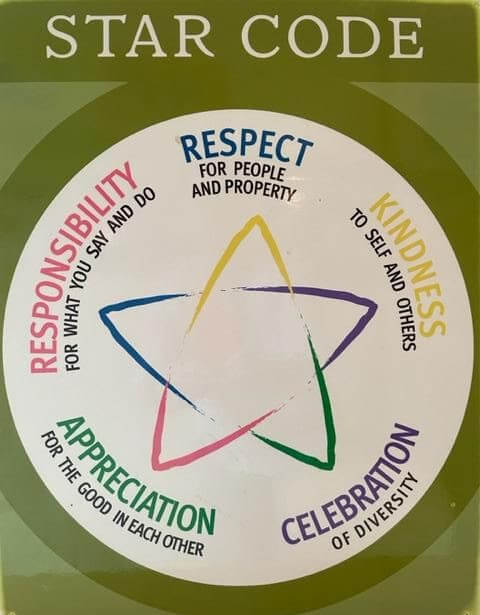
Learning from Dr. King at Home
We hope you’ll join us in reading Dr. King’s last book, Where Do We Go From Here? and the powerful Letter From a Birmingham Jail. Visit The King Center (founded by Coretta Scott King) for a schedule of virtual nonviolence training and other information on making a difference in King’s name. You can also virtually explore the Martin Luther King Jr. Research Institute at Stanford, which has a wealth of archives of Dr. King’s speeches, work and life.
Sharing Dr. King’s Legacy with Little Ones
For your little ones, we suggest keeping up with The Conscious Kid. Early Childhood Teachers at our school and at WECAN (the Waldorf Early Childhood Association of North America) use it frequently as a resource that informs both teaching and parenting.
We have many books about Dr. King’s life and work, appropriate for all ages, available to check out in our school library. And click here for children’s literature resources, including books by Black authors and books addressing conversations on race. (There are preschool-appropriate books on these lists; you will see age range listed when you click on each book.)
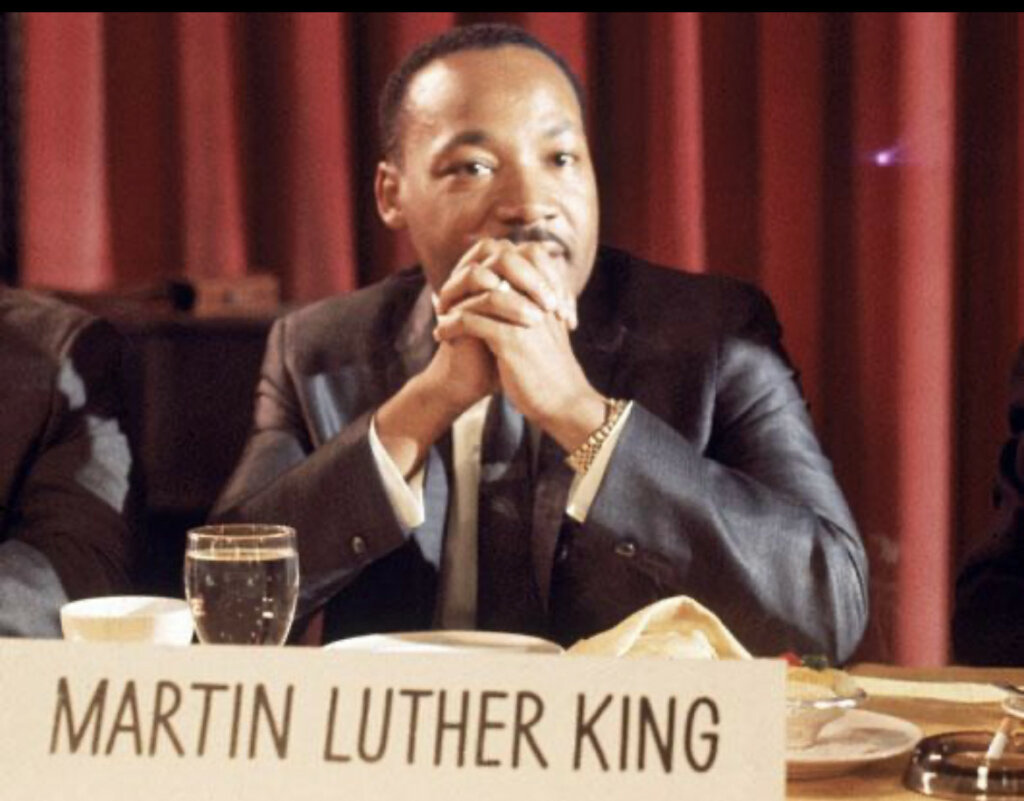
Berkshire Waldorf School teachers strive to keep Dr. King in their own consciousness, both in their daily work and in the way they live. As they teach your children and raise their own, teachers remember Dr. King’s selflessness, his love for his family, his own children, his joy, his belief in change and his persistence.
We hope that our dear families in the BWS learning community are inspired to do the same. Peace on Reverend Dr. King’s Day.
The Real Thanksgiving
Following Waldorf Education founder Rudolf Steiner’s indication that nothing should be brought into the classroom that is not meant to last for the child’s whole life, Berkshire Waldorf School teachers are conscientious and deeply thoughtful about the stories they tell, understanding that they are intended to live in our lives, our children’s lives, and in our school, well beyond our time.
Teaching with Stories
Stories are powerful. Starting in Early Childhood, teaching in Waldorf Schools is brought to the children as a story. Stories have been an effective information delivery system for human beings for millennia. They teach ideas and concepts, but also ways of being, moral situations and solutions, manners, creative problem-solving, cultural heritage, diverse points of view, identity, belonging, and much more. They touch the heart, not only the mind, appealing to each child’s imagination and curiosity. They engage us on a personal level, relevant to our own experience, and attach effectively to feelings and memory. Stories teach us how to be human.
The True Story of Thanksgiving
As we know, the true story of Thanksgiving is vastly different from the one told to us in our own Elementary School assemblies as children. The stereotypical story of pilgrims and Indians sharing a peaceful feast has had vast, devastating and lasting repercussions for Native nations. That’s why it’s so important to separate myth from history. Right here in New England, the Wampanoag Tribe first experienced the arrival of European settlers about 400 years ago in Patuxet (Plymouth).
BWS parent Lev Natan of Alliance for a Viable Future writes, “While Thanksgiving is a time of gratitude, we must acknowledge the true history of its origins and what it meant for the future of the Indigenous people of North America and their descendants.”
The Whole Story
Since 1970, the United American Indians of New England (UAINE) have marked Thanksgiving as a National Day of Mourning, a day of protest and remembrance for all that has been taken. (Learn more about it in Resources, below.)
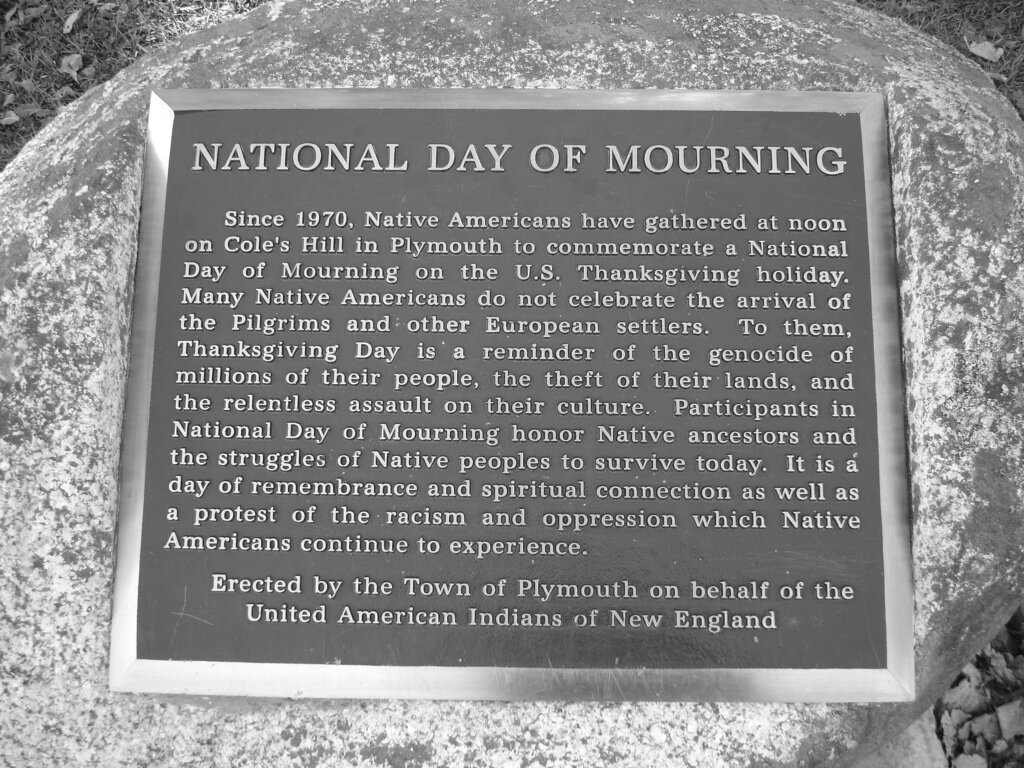
How to Tell the Thanksgiving Story to Children
As parents, educators and caregivers, we’d like to offer some resources regarding the celebration of Thanksgiving. We believe it’s important that we keep evolving the conversation about the meaning of this holiday, as we grow with our families and little ones.
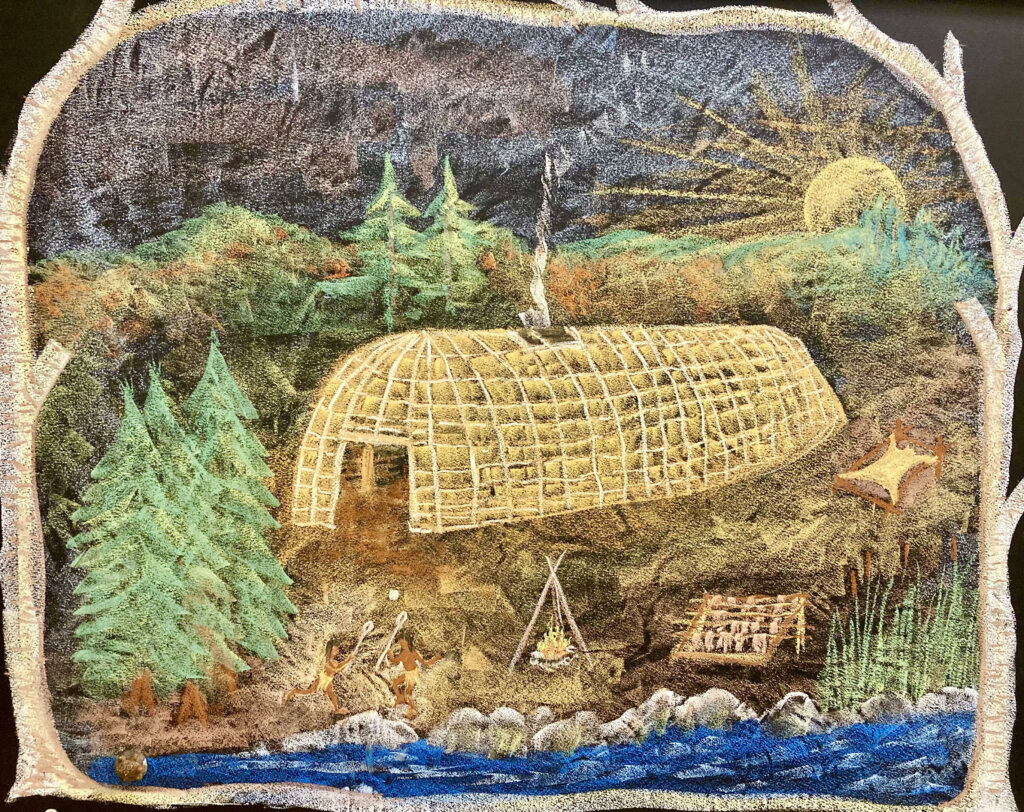
For very young children, Rose Room Nursery teacher Beth Oakley writes, “It’s enough to consciously introduce them (without tokenizing) to stories and appreciations of Indigenous people and traditions during this time of year in a meaningful way. If we as grown-ups carry this gesture of appreciation and acknowledgment with us during our Thanksgiving celebrations, the children will pick up on that inner mood, and grow to be even better human beings because of it.”
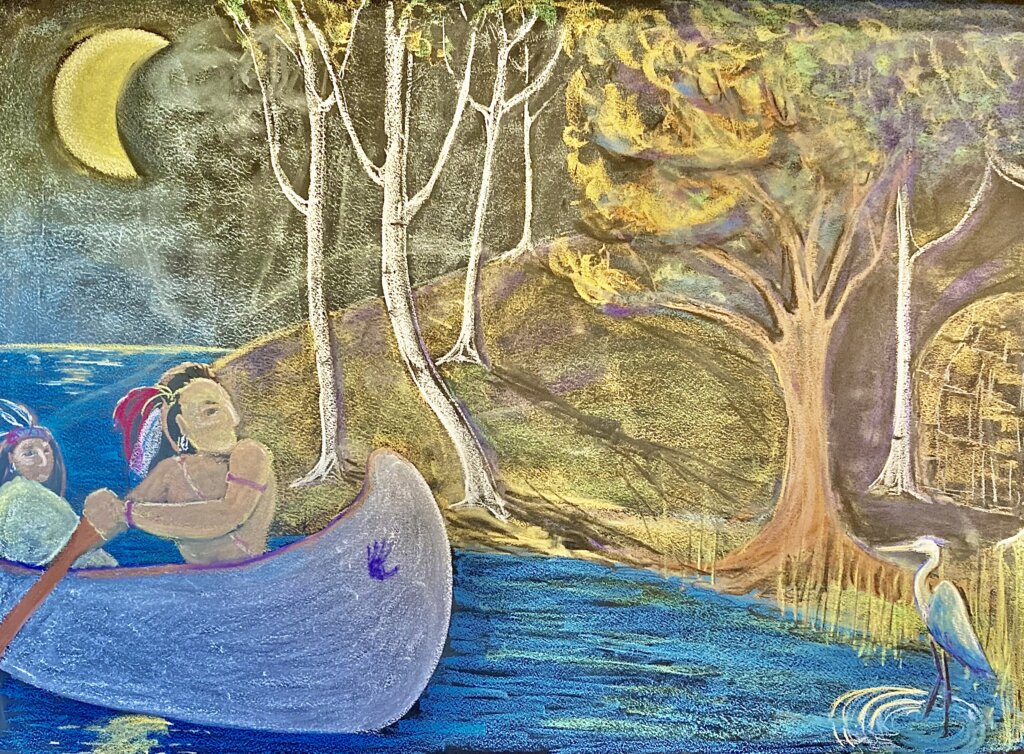
Ms. Beth adds, “Books are perhaps the best and easiest way to lovingly and gently ‘educate’ young children on concepts such as appreciation, anti-racism, inclusion and equity, and there is some stellar children’s literature out there to read to your little one at home.”
Another Point of View
This Thanksgiving, we have a special gift to share with you, a new book called Keepunumuk: Weeâchumun’s Thanksgiving Story. This is the story of the “first Thanksgiving” from the First Nations point of view, co-written by Danielle Greendeer (Wampanoag), Anthony Perry (Chickasaw – BWS Admissions Director/DEI Committee Chair Robyn Coe’s cousin), and Alexis Bunten (Unangan/Yup’ik), and illustrated by Garry Meeches, Sr. (Anishinaabe). The story, told from Weeachumun’s (Corn) point of view, includes a planting guide for growing the Three Sisters – corn, beans and squash – that traditionally sustained the Wampanoag, and that saved the pilgrims during their first year in Patuxet.
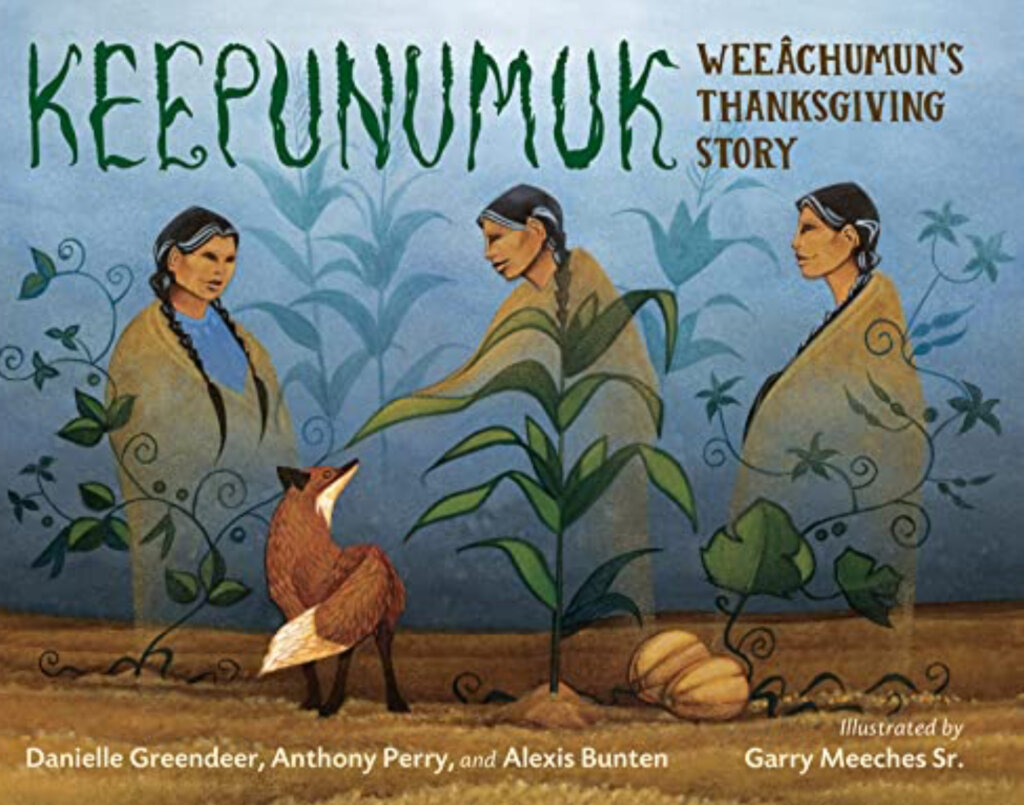
Getting Started
We recommend visiting Anishinaabe author Louise Erdrich’s Birch Bark Books, a Native-owned resource for literature that has twenty-nine full pages of children’s books available. And of course, these books should not only be visited this time of year, but all year. Consider learning and sharing the true story of Thanksgiving as a jumping off point for so much more learning.
Wishing you and your family the warmth of belonging, remembering that everyone deserves a seat at the table and welcome for the gifts they bring.
More Resources for Adults
Rose Room Nursery teacher Beth Oakley recommends reading this article from The Atlantic about the Wampanoag, and heading over to Teaching Tolerance for more resources.
We encourage you to visit the Mashpee Wampanoag Tribe‘s website. In addition, you can learn more about the UAINE’s National Day of Mourning (which takes place on Cape Cod every Thanksgiving at noon, including via live feed – quite a difference from the Macy’s Thanksgiving Day parade) and how to talk to children about Thanksgiving right here on our blog.
Berkshire Multiracial Families shared this interview, in which Cherokee children’s book author Traci Sorell (We Are Grateful: Otsaliheliga) discusses how to talk about Thanksgiving with kids.
Kieran Riley, husband of Pedagogical Lead Christianna Riley and “Farmer Kieran” to the children, shares this video reporting from his radio show on WGXC Hudson about the Wampanoag National Day of Mourning :
- Why These Native Americans Observe a National Day of Mourning (Huffington Post)
- The Harsh Truth About Thanksgiving – an interview with Larissa FastHorse, author of ‘The Thanksgiving Play’ (NowThisNews)
- Why the Story of Thanksgiving is a Lie (Smoke Signals)
- Native American Girls Describe the Real History Behind Thanksgiving (Teen Vogue)
- Unthanksgiving Day, a National Day of Mourning (Twinkl/USA)
From Keepunumuk co-author Alexis Bunten at Bioneers:
Here’s how we honored First Nations weekend in Great Barrington/Mohican Nation in October 2022. You’ll see many of our students and community members joining this public ceremony. On the Tuesday following First Nations Day, Mohican ambassador Shawn Stevens visited BWS to teach in the full Grades School circle.
- Northeast Indigenous Council on Climate Change – Watch this one first, it’s amazing! – Click Here
- Indigenous Peoples’ Day Ceremonial Walk – Click Here
- Video made by Southern Berkshires Community Television – Click here
Thanks for Sharing
YKK CPL! That’s Chickasaw shorthand for yakoke (thanks), che pisa la cho (see you next time).
–Admissions Director Robyn Perry Coe (Chickasaw Nation)
Looking forward to the Grades!
Come learn more about the next eight years of your child’s education at this special event, where we’ll discuss:
- Learning through imagination, curiosity and action in the Grades at Berkshire Waldorf School.
- Becoming a class community starting in First Grade.
- Helping your child transition from Kindergarten to Grades School.
Your participation at this in-person event includes visit to classes in progress and a saved seat at the BWS Thanksgiving Assembly (11am-12pm), for an inspiring survey of what Grades 1-8 have been learning during Fall term.
We look forward to celebrating this special moment with you!
Celebrating the BWS Holiday Handcraft Fair November 12
The Holiday Handcraft Fair is back! We look forward to welcoming our community to the 50th annual Holiday Handcraft Fair Saturday, November 12, live and in person, from 10am to 4pm at the school campus, 35 West Plain Road, Great Barrington.
To kick off the Holiday season, join us for family fun including puppet shows, horse drawn hayrides, cozy handcrafts, jump rope making, candle dipping, and other gifts to make and give.
Free parking and admission; rain or shine. For more information, call 413-528-4015 or email info@berkshirewaldorfschool.org
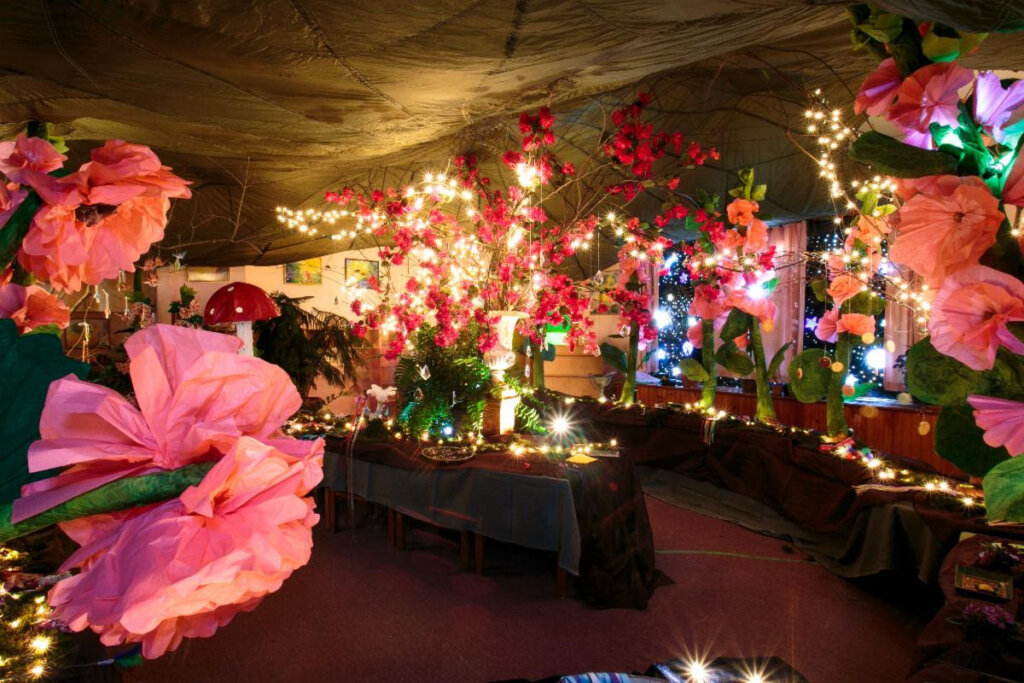
Sharing the Delights of a Handmade Holiday
Berkshire Waldorf School families come together to create a festive Holiday atmosphere, transforming every room in the Grades School building into magical realms to explore, making tiny gifts for the Little Peoples’ Shop and the Pocket Fairy, and knitting squares that will form TWO unique Community Afghans this year, part of a selection of items available to win in the Raffle Room.
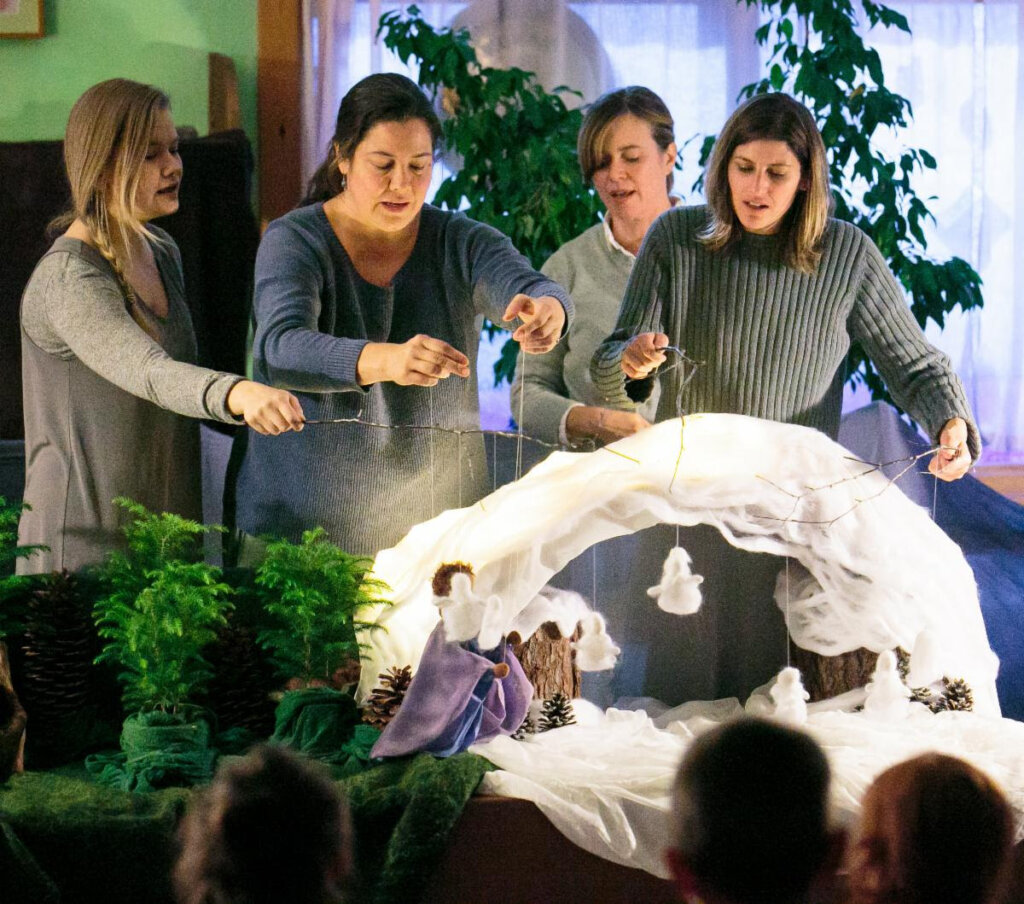
For the Child in Us All
Early Childhood teachers will perform “Spindlewood,” a puppet play featuring handcrafted puppets, with three performances during the day. Other Fair highlights include the Children’s Craft Room where youngsters can make their own presents, “Sweet Spot,” an interactive game with live musicians (and desserts for prizes!), magic shows with special guest Jadeena Magic, and the Pocket Fairy, whose many pockets are filled with small surprises.
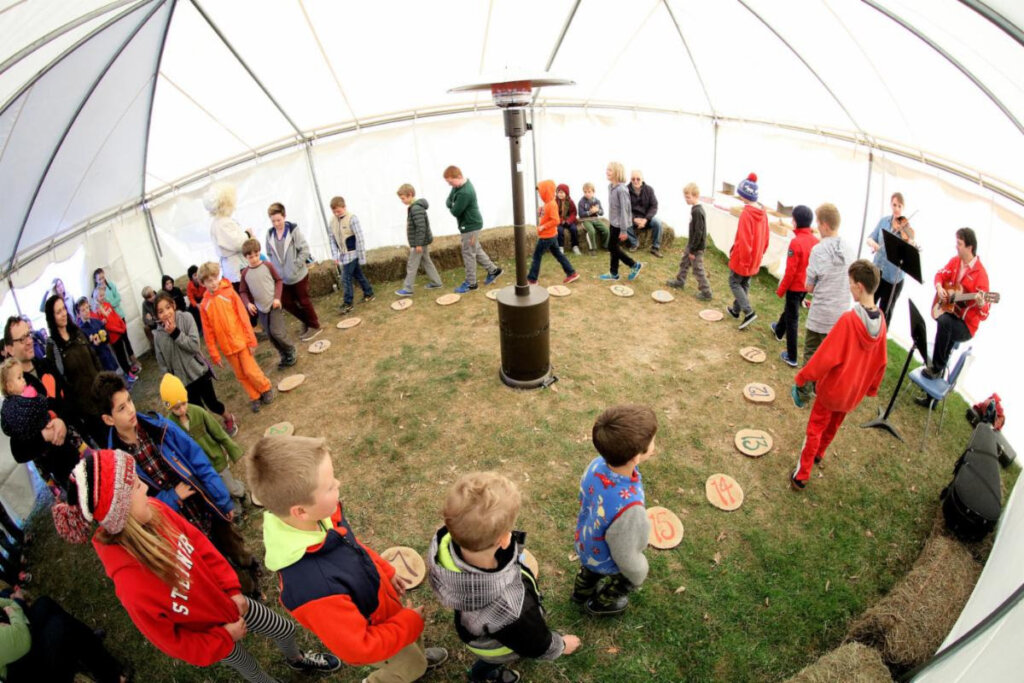
Treats for All Ages
Revel in the premium local goods and services at the Fair’s Silent and Online Auctions. Shop for warm handmade items in the Handcraft Room, and join the grownup fun at the Silent Auction, centerpiece of the Fair, with one-of-a-kind toys and gifts. The Berkshire Country Store stocks artisanal and gourmet treats, and our lunchroom, Rudy’s Diner, serves lunch, warm drinks and homemade desserts. Plus, enter for a chance to win a $1000 gift card from local food purveyors Guido’s or the Berkshire Food Coop.
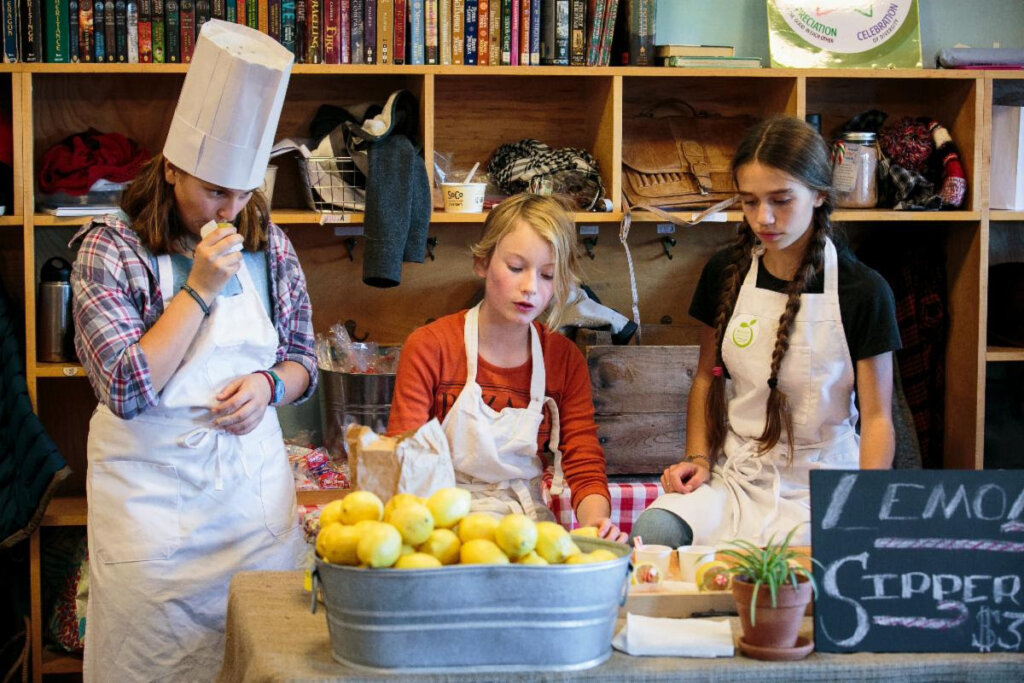
Berkshire Waldorf School’s curriculum of academic excellence activated with movement, music, outdoor learning and the arts has been preparing students to achieve their full potential for 51 years. The school is now welcoming Fall 2023 applications for students 18 months through Eighth Grade, and offers generous tuition support for qualified students.
Thanks for joining us! All Fair proceeds benefit the programs and students of the Berkshire Waldorf School.
BWHS’s New Home
Berkshire Waldorf High School announced on June 30 that, based on an ongoing multi-year fundraising campaign, they will begin renovations of Procter Hall, the Old Town Hall on Main Street in Stockbridge, as the future home of the school.
BWHS Executive Director and Faculty Chair Dr. Stephen Sagarin notes that this project will enable the school “to double our current square footage, including creation of more and larger classrooms and a science lab, while remaining in Stockbridge, within walking distance of the town center.”
Berkshire Waldorf High School relocated from Great Barrington to Stockbridge in 2013, and currently holds classes in rented space on Pine Street, up the hill from the Red Lion Inn. This year, the school is 20 years old and recently graduated its 16th senior class. The school’s tagline, “Small school, big world,” conveys its commitment to the community and beyond.
Historic Structure from 1829
“This also realizes the Town of Stockbridge’s dream of finding a permanent use for an 1829 historic structure,” added Teresa O’Brient, BWHS Board of Trustees Chairperson. Ms. O’Brient is a long time Stockbridge resident and owner of the Stockbridge Country Store. “We are so excited to finally have the resources to fund the remediation and renovation that will open a new chapter in the story of the Old Town Hall.”
“Win, win, win”
Stockbridge’s First Congregational Church, UCC, voted unanimously on June 26 to approve a memorandum of understanding between the Church and the School, to bring the building back to life. Church and School have formed a close working relationship over the past two years of the pandemic, when BWHS used the sanctuary and other rooms in the church building during the school week for socially-distanced classroom space. Both see this partnership as “win, win, win,” according to Pastor Brent Damrow, “for the Church, the School, and the Town.”
The school plans to partner with an architect to design the space and an engineer to assess the building’s needs. The Town of Stockbridge will need to approve aspects of any plan, probably later in the summer or in the early fall. Once this is complete, work on renovating the building for classes will begin as soon as possible.
Sagarin noted, “While we understand the complexity, we believe Procter Hall is uniquely suited to the long term needs of the High School. We are excited to partner with the Church and the Town to negotiate a transaction that is in the interest of all parties.”
How to Help
Berkshire Waldorf High School provides an education for adolescents that seeks truth, develops imagination, nurtures growth, fosters responsibility, and honors inner freedom in an atmosphere of academic excellence, artistic fulfillment, openness, and mutual respect. It offers Honors-level, college preparatory academics and is integrated into the larger community, including renowned artists’ studios, labs, libraries, and gyms, Shakespeare & Company’s Fall Festival of Shakespeare, field trips to events and museums in the Northeast, and international travel, including Germany, South and Central America, and France. Spots are currently available in Grades 9-12 for the 2022-23 school year.
Contact Dr. Steve Sagarin at ssagarin@berkshirewaldorf.com or at 413-207-2507 with questions, for more information, or to make a donation.
Happy Ramadan!
“This Ramadan story was written by a parent in my class, Saadia Shaza. We collaborated and turned it into a puppet play that we performed for the kindergartens. I hope you enjoy this sweet and educational story about Ramadan.”
– Christianna Riley, Pumpkin Patch Teacher & Pedagogical Lead
Once upon a time there was a little girl named Halima, who lived with her family near the
edge of the forest. She was excited, since she knew that soon it would be the ninth month
of the lunar calendar, and Ramadan would begin.
On the night near the new moon, Halima went outside with her family to see if the
time had come. She wanted so much to see the sliver of moon that would begin this special
time!
After dinner, as the sun set, she and her family went outside to see if they could catch a
glimpse of the crescent. Halima went into the dark night with her family. They carried
lanterns to light their path. They walked and walked until they got to a field. They brought
a blanket to spread out, and Halima’s Mama brought a thermos with warm tea to sip as
they waited and watched.
Halima realized she had forgotten her binoculars. She ran home to get her binoculars, and on the way back, in the dark night, Halima took a wrong turn and found herself in the
forest.
She asked herself, “Which way do I go?”
Then she heard a familiar sound.
Hooooo Hooooooooo Hooooooooooooo!
It was the sound of her friend Owl. She was so happy to see him! Owl swooped down to her.
“Halima, what are you doing here all alone?” asked the gray owl with huge round eyes and
silvery feathers.
“It is almost Ramadan!” said the girl. “Soon it will be time to fast.”
“What is Ramadan, and what is fasting?” asked Owl.
“Ramadan lasts one month. It is a time to reflect on ourselves, to be thankful and to help
others. Fasting happens during these special thirty days. During our fast, we eat and drink
only when it’s dark outside.”
“You don’t eat and drink all day?!” said Owl.
“Well, before the sun peeks out each day, we have a big meal. We fill our bellies with food
that will give us energy all day. When the sun disappears in the evening, we gather with
family and friends to break our fast with a feast!”
“That sounds so fun,” said Owl. “Can I come? What do you eat?”
“Every family has different foods that are part of their tradition, but everyone begins their
evening meal with a plump juicy date. In my family, we always make pakoras! Those are
delicious fried potatoes and vegetables with yummy spices!”
“But why do you fast?” asked Owl.
“We fast because we know there are many people who are less fortunate than us. We
appreciate how lucky we are, and we give thanks!”
“Halima, what else do you do during Ramadan?”
“We think about what is most important to us, and we spend time with family. We pray, we
lend a helping hand, and try to do other good deeds.”
“How do you know it is the end of Ramadan?”
“When the new crescent moon finally appears in the sky, it marks the end of Ramadan and
then we celebrate Eid! Eid is also called the Sweet Festival.”
“What happens then?”
“For the next three days we eat and pray, and we give each other gifts.”
“This all sounds like so much fun! Can I come and celebrate with you?”
“Of course you can! Gathering together in community is the best way to spend the month
of Ramadan. But first, I need to get to my family. Can you help?”
“Yes! Jump on my back, and I will take you to them.”
Halima and Owl soared up in the sky. It was a cloudy night, but they flew up so high they
made it above the clouds to a clear sky, and there they saw…
A beautiful, thin crescent moon.
“Ramadan Mubarak! Happy Ramadan!!!!” Halima exclaimed.
They swooped down and found her family and so many other families looking for the
moon. Halima announced, “We saw the moon! Tomorrow is Ramadan!”
Everyone celebrated and shouted “Ramadan Mubarak!” while hugging each other.
What a joyous time it would be.
– Saadia Shaza, Kindergarten Parent
Meet Our First Grade Teacher
Welcome Class of 2030
Berkshire Waldorf School is pleased to announce Andrew Gilligan as First Grade Class teacher for the 2022-23 school year.

About Mr. Gilligan
An experienced Waldorf educator, Mr. Gilligan has taught students across Elementary and Middle School grades as well as Early Childhood for the past fifteen years. He is currently the second grade class teacher at the Seattle Waldorf School. Mr. Gilligan previously worked at Meadowbrook Waldorf School in Richmond, RI, where he taught students from First Grade to Middle School. At Meadowbrook, he was a member of the Board of Trustees and the Core Teachers, acting as a leader of fiscal and pedagogical decision-making for the school.
Mr. Gilligan completed his Bachelor of Arts from the University of Vermont. He earned his Elementary Education Certificate, Waldorf Education Certificate, and Masters of Education from Antioch University New England.
Meet Mr. Gilligan
Families whose children will be six by September 1, 2022 and interested community members are invited to meet Mr. Gilligan, with First Grade subject teachers, at our Meet the First Grade Teachers event. The meeting will be held over Zoom Saturday, January 29 at 10:30 a.m. To join this live, free, virtual event, create your account in our family portal, and select this event. To learn more, contact Admissions Director Robyn Coe at admissions@berkshirewaldorfschool.org.
Join us!
At Berkshire Waldorf School, students start with their Class Teacher in First Grade and move through the Elementary and Middle School curriculum with their class, to build strong, long-term relationships.
Berkshire Waldorf School is now accepting applications for the Class of 2030. The new family application deadline for Fall 2022 is February 1. Visit our How to Apply page to register in the parent portal, create an inquiry, register for events and access the First Grade application. (Current BWS students who will be 6 by September 1 are automatically pre-enrolled for First Grade in the Fall.)
Berkshire Waldorf School is one of over 1,000 international Waldorf schools, part of the fastest-growing independent school movement in the world. The school welcomes students from all backgrounds, and offers generous financial aid for students based on need. Happy 50th anniversary, BWS!
Holiday Fair Time!
There’s no place like home for the holidays, and the same goes for Berkshire holiday gifts. Our Holiday Handcraft Fair Auction offers the best of the Berkshires – local gifts, get-away packages, treats, warm and cozy wraps, toys and handcrafts, all local and ready for the holidays!
Starting November 26, and running through December 12 at 9pm, click on the link below to register, place your bids for your favorite items, and check back often, as we’ll drop new surprises throughout the auction.
The best part? Berkshire holiday gifts mean no supply chain delays or shipping. So join the fun at the Holiday Handcraft Fair Auction, good for the environment and good for our local community. Click the button below to explore! We’ve brought the best of the Berkshires to you.
All gifts ready for pickup in time for giving. Happy Holidays!
Giving Thanks
Now our minds are one.
For the first time in many months, our community gathered this week to give thanks, for the earth and the Muhhekunneuw (Muh-he-con-ok) elders and land keepers who have lived in balance and unity for 10,000 years on the sacred land on which we learn together.
Now called the Stockbridge-Munsee Band of the Mohican Nation, the first nations people of our region are alive and well in Wisconsin, and are returning to their homeland. We strive to live in relationship, respect and shared values with their community. To do that, we open our hearts and turn our minds toward listening.
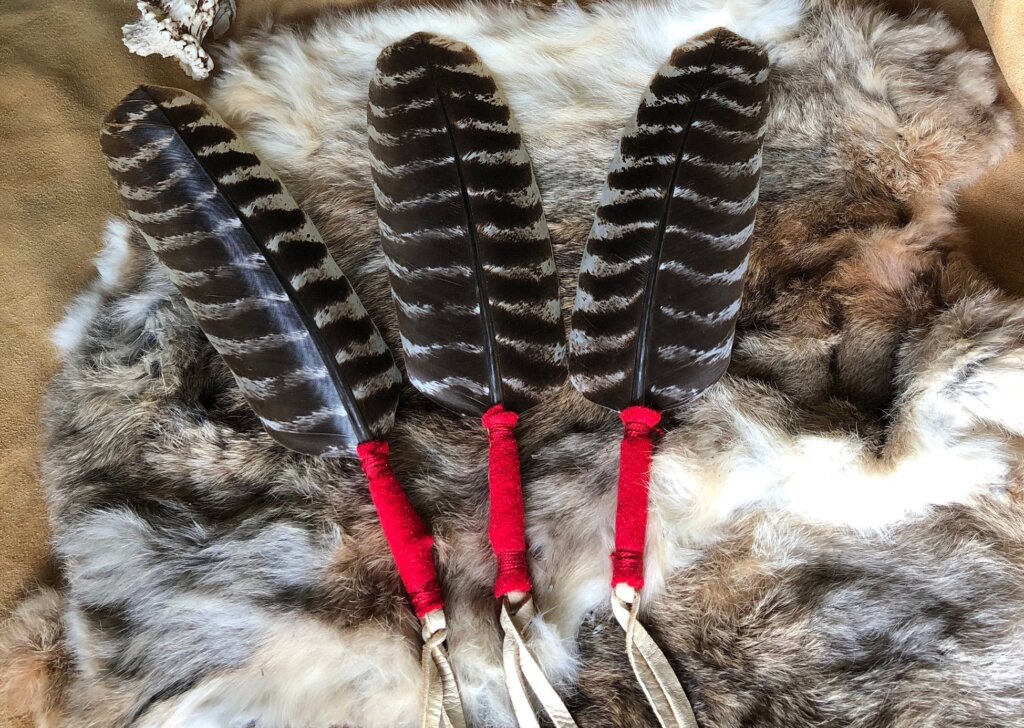
Living Stories
At the assembly, each of the grades classes shared a little of what they have been learning during Fall term. Waldorf teachers bring all they teach to the children through story. When BWS adapted Waldorf education for COVID times, much of our learning went outside. Starting in November, when temperatures dip below freezing, we light a fire every morning for outside classes. Hearing stories around the fire is ancient learning technology, both essentially human and unforgettable.
Second grade has been learning stories from the Muh-he-con-ne-ok (Mohican, now known as the Stockbridge-Munsee community) and the Haudenosaunee (Iroquois Confederacy). Our teachers feel strongly that Berkshire Waldorf students should learn the stories native to this land, before extending out to stories of cultures across the world, putting these stories at the center of the here and now.
Haudenosaunee Thanksgiving Address
Third grade has also been learning from the Haudenosaunee. At the assembly, they recited a portion of the Haudenosaunee Thanksgiving Address.
Today we have gathered and we see that the cycles of life continue. We have been given the duty and responsibility to live in balance and harmony with each other and all living things. So now, we bring our minds together as one, as we give our greetings and our thanks to one another as people.
It’s important to know that the Haudenosaunee thanksgiving is not a once-a-year event. Just as the Haudenosaunee do, Waldorf students and teachers begin their days with a blessing, preparing to work together and do their best, and building collective strength in this way.
Many of the grades hung turkey feathers in the apple trees in the big backyard – each feather a blessing of gratitude. These are ways to begin to reclaim the meaning of Thanksgiving. Seventh grade smudged with sage around their fire, to purify seeing, hearing, speaking, hearts and minds. These actions are the beginning of reframing Thanksgiving in our diverse community.
We are Grateful
So you might be wondering, What do I tell my children about Thanksgiving?
To reiterate from our blog post last year, start with learning together about Thanksgiving and ways to practice gratitude from Indian writers and storytellers. Learn about food sovereignty, and consider adding diversity to your celebration with a dish that includes rich indigenous flavors like corn, beans and squash. More learning resources are listed below.
As adults, learn that not everyone is feasting and celebrating; indigenous people, especially in New England – especially in Massachusetts – are fasting, and meeting at Plymouth Rock to hold this day as a National Day of Mourning.
While it’s important that parents know and acknowledge the truth of history, fourth grade teacher Victoria Cartier points out that you will want to tune what you say to your child’s age and development.
For example, with early childhood students, the focus is on making food and saying a blessing for all the good gifts of the earth.
“And I would add, give gratitude to nature,” Pumpkin Patch Kindergarten teacher and Pedagogical Lead Christianna Riley suggests. “Take walks in nature, be in wonder together and admire its beauty. Young children are so good at finding ordinary rocks or sticks as beautiful and special treasures. We can learn from them.”
With third graders, Ms. Cartier says she would emphasize generosity, working together for the good of all, and gratitude. In eighth grade, children are ready for and seek the truth, and that’s a time to share more details. In high school, students will want to act for justice.
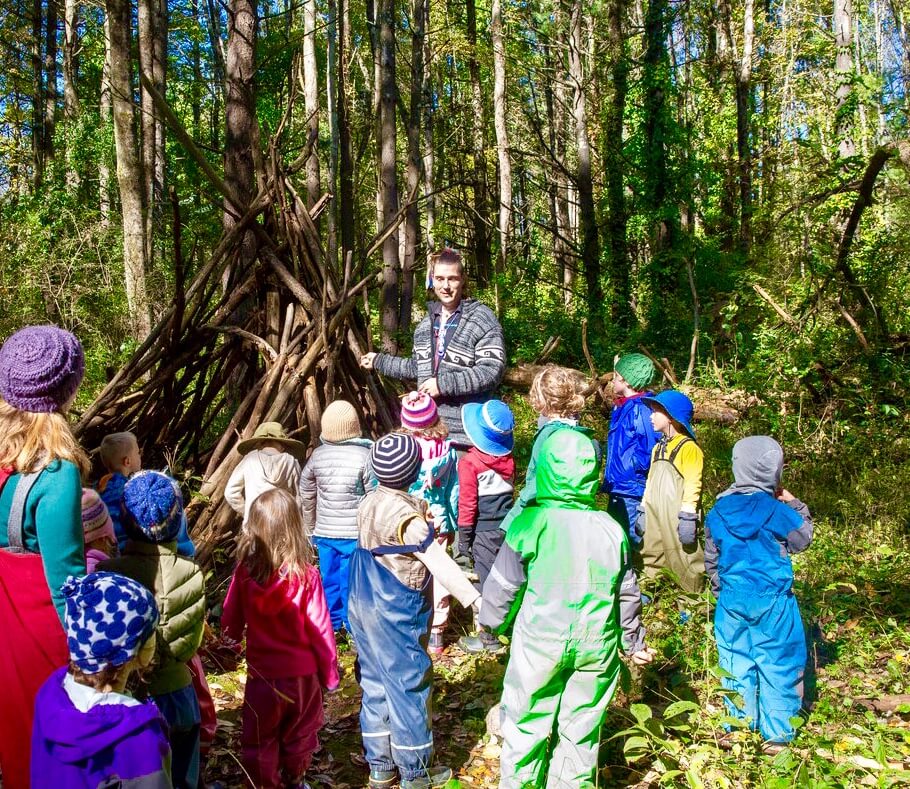
More Resources:
Haudenosaunee Thanksgiving Address:
americanyawp.com/reader/british-north-america/haudenosaunee-thanksgiving-address
Learn more about the true story of Thanksgiving:
https://berkshirewaldorfschool.org/rethinking-thanksgiving/
Visit Berkshire Museum (through 1/9/22) to learn more about the past, present and future of the Mohican Nation:
http://berkshiremuseum.org/portfolio-item/muh-he-con-ne-ok
What you can do now to promote healing:
New BWS Leadership Team
On October 18, the Berkshire Waldorf School Board of Trustees appointed a new threefold executive leadership team. Collectively, this collaborative team replaces the role of a school director.
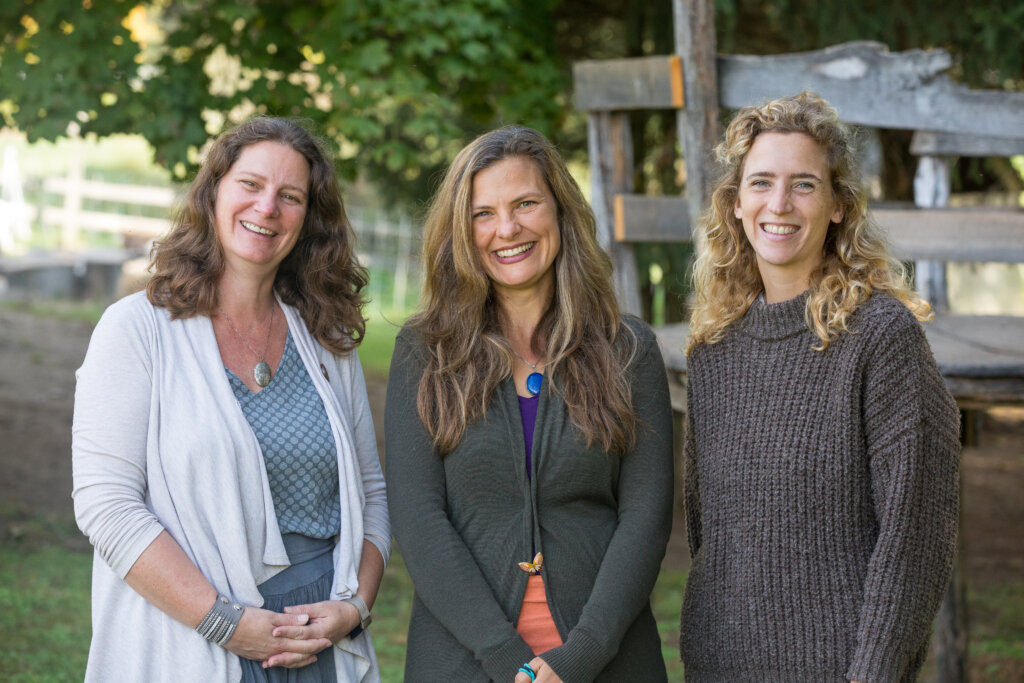
Over the past 18 months, Berkshire Waldorf School has self-governed through waves of transition and deep, reflective work. In addition to an all-hands-on-deck response to the ongoing pandemic, two collaborative committees explored and brought to fruition a threefold leadership model to address the changing landscape of Waldorf School leadership and non-profit governance. This would not have been possible without the patience and resolve of the whole community.
Changing Infrastructure and the Selection Process
Leadership Transition Team Recommends Collaborative Structure
Between February and June of this year, a ten-member committee of faculty, administration, trustees and Council members formed the Leadership Transition Team. This group carefully reviewed a proposal to migrate from a school director model to a three-person leadership model. Of the course of many meetings, they studied the relevance, application, and implications of such a change in the school’s context. Following thorough deliberation, the Leadership Transition Team recommended the change in governance infrastructure to the Board of Trustees, advocating for a partnership model of leadership to meet both the leadership needs of the school and the ideals of Waldorf governance.
Selection Committee Recommends Candidates
Next, a second, seven-member committee, the Selection Committee, was launched in June to recruit and vet candidates for the leadership roles and to make a recommendation to the Board of Trustees. Their rigorous and deeply thoughtful process sought to balance individual capacities and group dynamics. The Selection Committee’s recommendation was accompanied by the following list of priorities:
Partnership
The Leadership Transition Team, who spent many months studying the governance patterns of Waldorf schools and BWS specifically, recommended collaborative leadership, and charged the Selection Committee with recommending a team who would bring to life a model of partnership to unite the pedagogical, administrative, and community functions of the school, in service of its mission.
All three candidates indicated the development of this partnership as their primary motivation for pursuing the role. All three candidates demonstrated a strong default to collaborative work. While they are individually skilled in their domains of expertise, they also demonstrated crossover skills with the other domains, which will help forge tight bonds across domains.
Commitment to Waldorf Education
The selection committee sought a values-based leadership team, who would find strength in a common commitment to Waldorf education. Each selected candidate came to the process having freely and individually pursued an interest and commitment to Waldorf Education to significant depths. All three selected candidates have previous roles or work experience in diverse Anthroposophical environments. Specifically, the three also value the dynamism of these values, and are intrigued and inspired by the contemporary implementation of their ideals.
Leadership Capacities
In addition to specific expertise, the selection committee prioritized a set of leadership capacities that correlate with leading through change, chartering a new model and enhancing collaborative culture.
Bringing Experience to the Task
Pedagogical Lead Christianna Riley
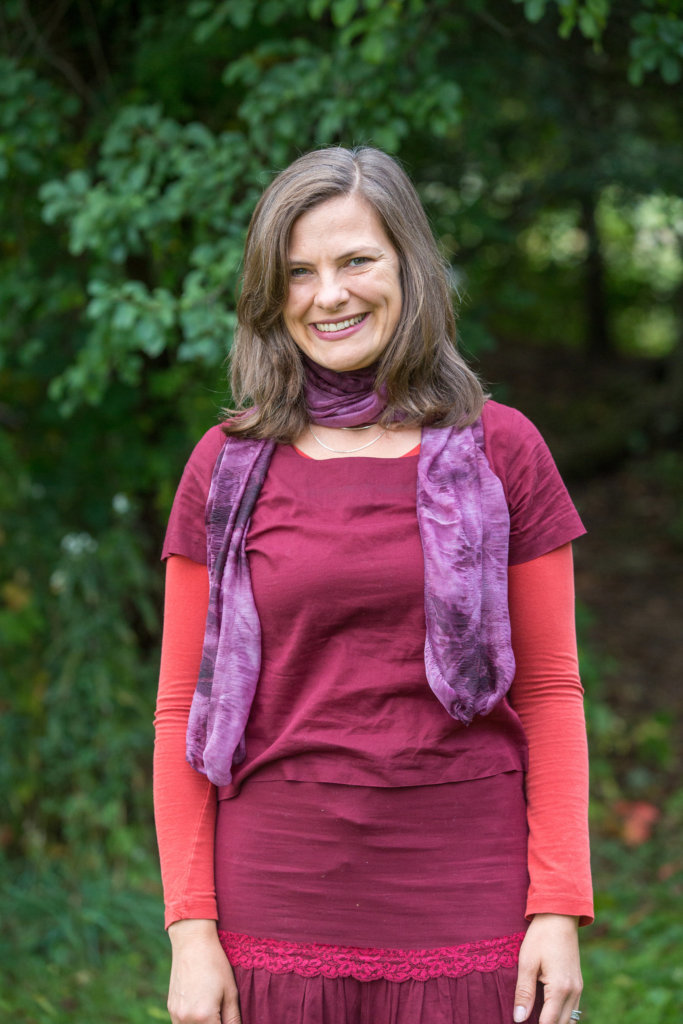
Ms. Riley has a deep commitment to Waldorf pedagogy, most recently demonstrating her leadership as the Co-Chair in Early Childhood and as a member of both the BWS Board of Trustees and Council of Teachers. Ms. Riley has a pioneering spirit, not only chartering the Pumpkin Patch outdoor kindergarten at BWS, but also serving as a founding teacher, EC Director, and Board member at the Primrose Hill School, a Waldorf School in Rhinebeck, NY. Ms. Riley is a Waldorf graduate herself, and has been an early childhood teacher for thirteen years. Ms. Riley was a member of the Leadership Transition Team that proposed the form of leadership BWS is embarking on. It was during this process of discernment that she felt called to step forward to serve as a member of the leadership team. Ms. Riley is an active member of the DEI committee, and has engaged in curriculum development and implementation of a Peace Education Program with the United Nations NGO World Peace Prayer Society.
Ms. Riley remains the lead teacher in the Pumpkin Patch. The prioritization of placing an active teacher in the leadership team is an intentional application of Waldorf governance ideals. Ms. Riley’s continued full engagement with the children of the Pumpkin Patch ensures that all of our leadership decisions are anchored to these very special souls at the beginning of their journey with us, and by proxy, all of the children at the Berkshire Waldorf School.
Community Lead Renée Far
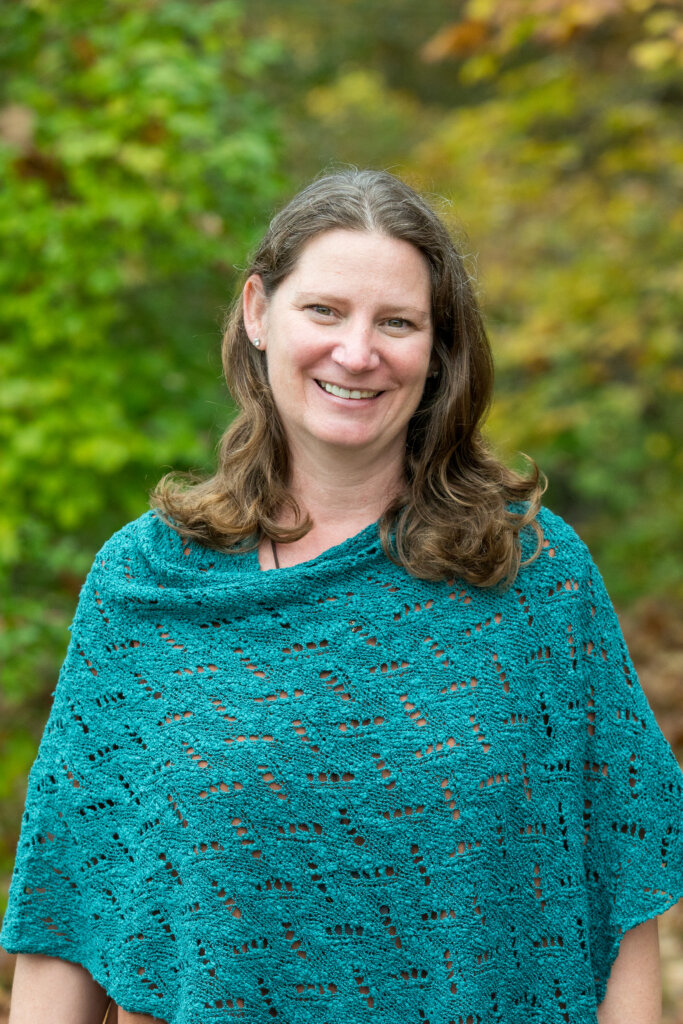
Ms. Far has demonstrated her leadership during the past year as the Director of Enrollment, developing more robust systems for securing our enrollment targets early, and partnering with families to sustain their commitment to the school. Ms. Far has demonstrated her capacity for partnership on the Admissions and Enrollment team, in addition to serving as the administrative coordinator for Early Childhood. Ms. Far is a trained Waldorf teacher, and has several years’ experience working in our business office, which uniquely qualifies her to help guide the creation of this leadership model with an understanding of the points of intersection between our threefold system. Ms. Far is a member of the DEI Committee and thinks critically about the role of the school in responding to our collective social mission.
Operations Lead Kendra Smallwood
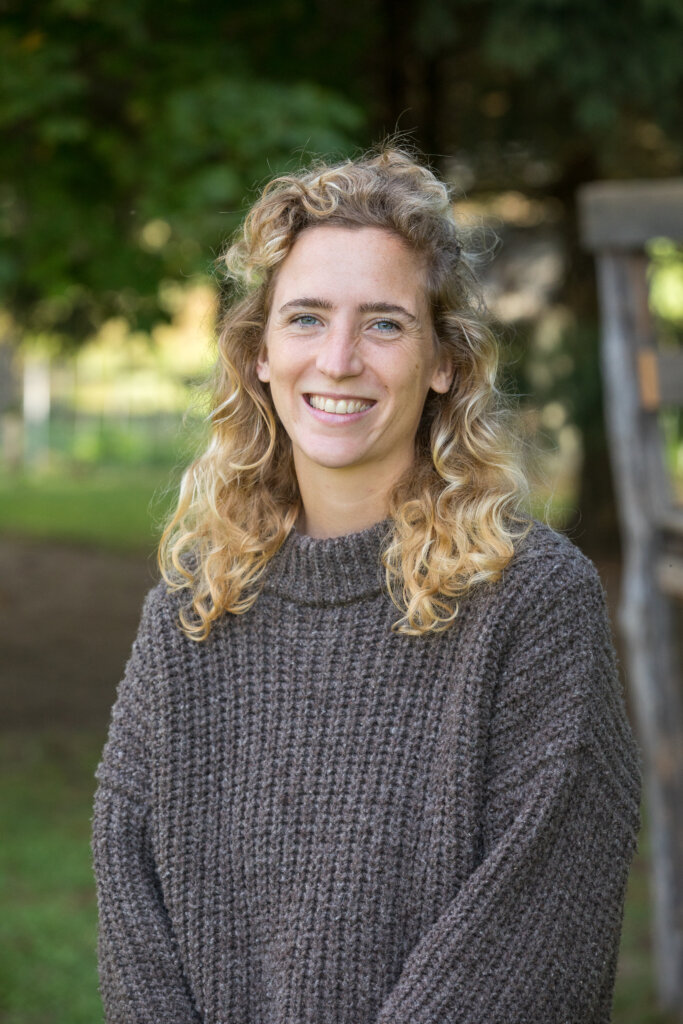
Ms. Smallwood joins our school after holding a key leadership position in administration and operations at Stanton House, a residency program for diverse adults inspired by Camphill Communities. At Stanton Home, Ms. Smallwood has been an influential collaborative partner for the Executive Director and the Board of Trustees during years of robust organizational growth. Ms. Smallwood is a primary author of the Stanton House strategic plan, and has introduced new practices for vision-aligned financial planning. Ms. Smallwood has extensive experience in non-profit development and fundraising for Stanton House. She is a self-starting leader, who is accustomed to performing in continuously developing roles.
Going Forward
Berkshire Waldorf School celebrates a major milestone in launching the new threefold leadership team in the school’s 50th anniversary year; however, the work of transitioning our governance model continues.
Karen Fierst, who facilitated both the Leadership Transition team and the Selection Committee, will continue in a consulting role for the threefold leadership team, as well as continuing to play a lead role in the school’s COVID policy-making and strategic planning process. She will retire the title of Reopening Project Coordinator and assume the new title of Director of Strategy and Leadership Advisor.
The goal of Berkshire Waldorf School’s new leadership structure is to achieve greater clarity and representation in the school’s decision-making process. This is one key part of our school’s renewal, coinciding with the 50th anniversary and the re-accreditation process occurring this year.

